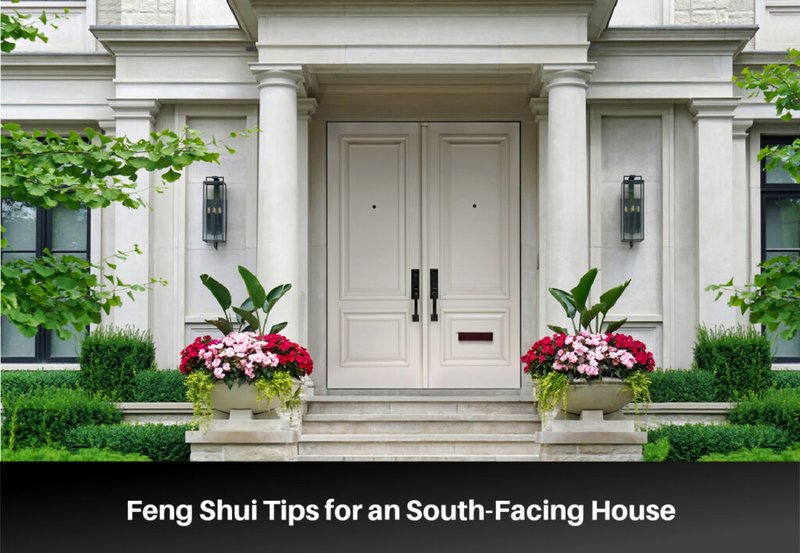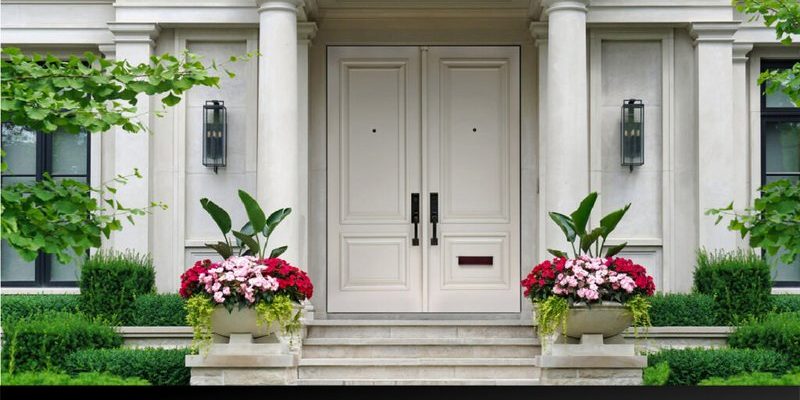
Here’s the thing: keeping your locks, handles, and hinges working smoothly isn’t just about looks. Reliable hardware means peace of mind, easier access, and less frustrating “Why won’t this door open?” moments. If you’re tired of stuck keys, faded handles, or just want your entryway to stay sharp, solid habits and a little know-how go a long way. Let me explain exactly how you can stay ahead of the weather and keep your door hardware working (and looking) its best, whether you’ve got a classic brass knob or a modern Yale smart lock.
Why South-Facing Doors Suffer More Wear
If you stand outside on a sunny day, you can literally feel the heat on your face. Now, imagine that sun blasting your door hardware every day, year after year—it’s a recipe for trouble. South-facing exterior doors get more direct sunlight than any other direction in the Northern Hemisphere. This means more heat buildup, stronger UV exposure, and greater chances of fading and material breakdown.
Take a look at that once-polished chrome handle or elegant oil-rubbed bronze lever. South-facing doors cook them all. Sunlight can fade finishes, weaken plastic parts, and even cause lubricants inside smart locks to break down faster. It’s not just about the temperature, either. UV rays break the chemical bonds in paint and metal coatings, causing hardware to pit, flake, or change color.
Strong sunlight also makes any metal expand and contract, which can eventually loosen screws and create tiny gaps in your door hardware. Those gaps let moisture in—another enemy that can corrode metal and make locks feel gritty or stickier than they should. Even if you’ve bought a high-end brand like Schlage, Yale, or Baldwin, without regular care, south-facing hardware simply ages faster.
Choosing The Right Hardware Finish For Sun and Weather
If you’re shopping for new exterior door hardware, trust me: not all finishes are created equal. Some look amazing on day one but turn dull and spotty by year two—especially on south-facing doors. The key is to pick hardware specifically rated for outdoor and high-UV conditions.
- Stainless Steel: This is often the gold standard for sun and rain. It resists tarnishing, keeps its shine, and won’t pit easily. Perfect for tough sun exposure.
- Solid Brass (with high-quality lacquer): Beautiful and classic, but pay for a brand known for durable coatings. Cheaper brass can tarnish fast in the sun.
- Powder-Coated Finishes: Great for color and durability, but look for UV-resistant options. Cheap coatings can chalk and fade quickly.
- Oil-Rubbed Bronze: Stylish but prone to uneven fading. Some folks like the “aged” look, but it’s not for everyone.
- Satin Nickel/Chrome: Modern and sleek, but these can show fingerprints and may lose their luster if the sun is relentless. Go for “weather-resistant” versions if possible.
Why does this matter so much? Because your door isn’t just decoration—it’s a seal against weather, and the finish is your first line of defense. Picking hardware meant for sunny, harsh conditions saves you time scrubbing, repolishing, and ultimately replacing it down the road. Universal hardware can work, but if possible, stick to trusted brands with good warranties for exterior use, like Schlage, Yale, or Baldwin.
Regular Cleaning: The Easiest Way To Extend Hardware Life
Honestly, it’s amazing how much grime, dust, and pollen can stick to door hardware—especially in sunny spots. If you’re not cleaning it, you’re basically letting the sun bake all that dirt right onto the finish. The good news? Keeping things clean is easy and makes a huge difference.
For most hardware, a simple wipe with a damp, soft cloth every couple of weeks keeps things looking sharp. Avoid using harsh chemicals or abrasive pads, especially on plated finishes. Those products can strip the protective coating and speed up sun damage. For fingerprints, a little dish soap and water works wonders—just dry thoroughly when you’re done, because standing water is never a friend to metal.
Every few months, take time to go deeper. Remove the lock or handle if you can, and clean around the edges and screws where grime tends to hide. For smart locks like a Yale or Schlage, gently wipe the keypad or touchscreen to keep sensors responding well. If you notice sticky spots or resistance, now’s the time to act before it turns into a real problem.
Lubrication: Why, When, and How To Do It Right
You might be wondering: does my door hardware really need special attention for moving parts? Absolutely. Sun, heat, and dust dry out lubricants faster than you’d think—especially if your door faces south. Without a little TLC, your lock starts feeling stiff, handles grind or squeak, and even expensive models can start jamming.
Here’s what I recommend:
- Pick a dry lubricant, like graphite or a Teflon-based spray. Avoid oil-based products (like WD-40) for most locks; they attract dust and can gum things up.
- Shoot a small amount into the keyway, latch, and moving hinge parts about twice a year—more if you hear squeaks or feel stickiness.
- Work the lock or handle back and forth a few times after lubricating to spread the lubricant evenly.
- For smart or electronic locks, check the brand’s manual—Yale and Schlage often recommend wiping clean and only using very light lubrication.
Lubrication isn’t optional for sunny doors. Think of it like brushing your teeth; skip it long enough and you’ll pay later. If things still stick, check for alignment issues (more on that soon) or corrosion inside the lock.
Handling Faded, Tarnished, Or Discolored Finishes
If you’ve ever run your hand over a once-glossy handle and found it pitted, chalky, or two-toned, you know the struggle. South-facing doors are infamous for fading and tarnish, no matter what finish you picked. But you do have options.
For light discoloration, a gentle buff with a microfiber cloth and a dab of metal polish (if the finish allows) can restore some shine. Always double-check your hardware’s care instructions—some modern finishes, like powder-coated or lacquered metals, aren’t meant for polish and can be ruined by abrasives. If you see peeling or bubbling, it’s probably time to consider replacement or professional refinishing.
Another smart move? Add a little shade. Even a small awning, overhang, or a well-placed plant can go a long way in protecting hardware. If that isn’t possible, try a UV-resistant clear spray (just test on a hidden area first) to add an extra layer of sun defense. Again, some folks genuinely enjoy the weathered look, especially with oil-rubbed bronze—but if “aged” isn’t your vibe, a once-a-year protection plan keeps things bright.
Sun-damaged hardware isn’t a crisis, but it’s usually a sign you’re due for a little hands-on care—or a quick upgrade if the damage is too far gone.
Checking And Tightening Hardware For Long-Term Security
Here’s a trick that’s saved me more headaches than I can count: make a habit of checking and tightening your hardware every spring and fall. Direct sun and temperature changes can cause screws and plates to loosen—sometimes just enough to let your lock wiggle, or even misalign the latch and deadbolt.
Start by gently trying to wiggle the handle, knob, or lock cylinder. Notice any movement? Grab a screwdriver and snug those screws—don’t over-tighten, just enough to stop any shifting. Pay extra attention to the strike plate on the door frame; this is crucial for making sure your door closes securely and locks easily.
If handles or locks keep coming loose or you see screw holes “stripping out,” you might need to use longer screws or filler plugs to get a solid grip. It’s a quick, satisfying fix and can often prevent a much bigger security problem later. For smart locks with batteries (like Yale or Schlage models), use this check-in time to swap batteries and make sure the code keypad is working smoothly.
Troubleshooting Sticky, Jammed, Or Flaky Locks
Nothing’s more annoying than fumbling at your door because the key won’t turn, the handle sticks, or a smart lock refuses to sync or reset. On south-facing exterior doors, there are a few likely reasons—most of them easy to fix with a little troubleshooting.
- Key sticks or won’t turn: Dirt and dried lubricant are the usual culprits. Clean the keyway, then apply a dry lubricant.
- Handle feels loose or wobbly: Check for loose screws or misaligned plates, as mentioned above.
- Smart lock won’t pair, sync, or responds erratically: Heat can mess with electronics, and batteries drain faster in hot sunlight. Replace batteries and perform a system reset or firmware update if needed. Make sure the keypad or touchscreen is clean and free from sticky residue.
- Door won’t latch: Sun can warp wood doors ever-so-slightly, especially in summer. Adjust the strike plate position if necessary.
Most problems come down to dirt, dryness, loose screws, or battery issues. Start with the easy fixes before assuming your lock is broken.
If you’ve got an older universal lock, don’t be surprised if replacement becomes your best long-term solution, especially if parts are pitted or warped. Newer hardware—especially from good brands—tends to offer better weather resistance and support.
How To Protect Hardware From Sun Damage Long-Term
Sometimes, prevention really is the best fix—especially when you’re dealing with relentless sun. There are a few extra tricks that can help if you want to protect your south-facing exterior door hardware for the long haul.
- Install a door awning or canopy. Even a small overhang blocks the harshest noon rays and stops rain from driving in.
- Add a UV-resistant clear coat to metal hardware (check manufacturer guidance first).
- Use hardware covers for rarely-used doors—these slip over handles or locks and provide extra protection when you’re away for a while.
- Plant tall shrubs or place a potted tree to create some shade if the look works for your entryway.
- If you’re replacing hardware, choose the most weather-resistant finish your budget allows, and register your product for warranty support.
Sun, heat, and rain are unavoidable, but you can absolutely slow down the damage. The small steps above don’t take much time or money, but they make a real difference over a few summers.
Wrapping Up: Keep Your Entry Strong and Stylish
Taking care of hardware on a south-facing exterior door is a lot like caring for a car parked outside—it needs a little more attention than the one in the garage. Whether you’ve got a classic Schlage deadbolt, a Yale keypad, or a universal lever from the hardware store, the basics are the same: clean regularly, lubricate smartly, tighten parts, and occasionally add some shade or protection.
Simple habits—like checking screws each season or wiping away a week’s worth of grime—pay off with easier access, less frustration, and hardware that makes your home look welcoming, not tired. Your front door is the handshake your house offers to the world; keeping its hardware healthy is the easiest way to make a good impression, rain or shine.
